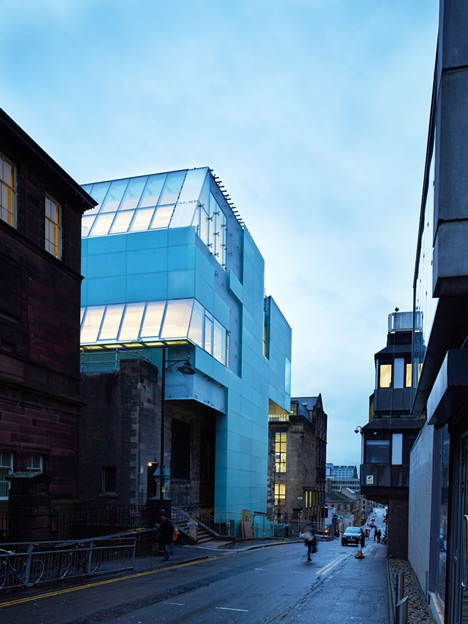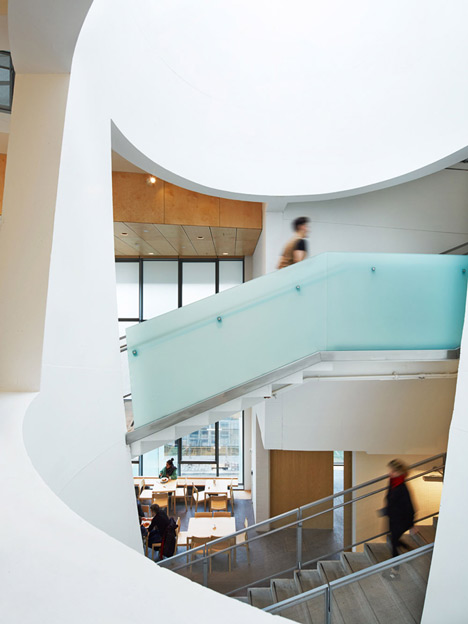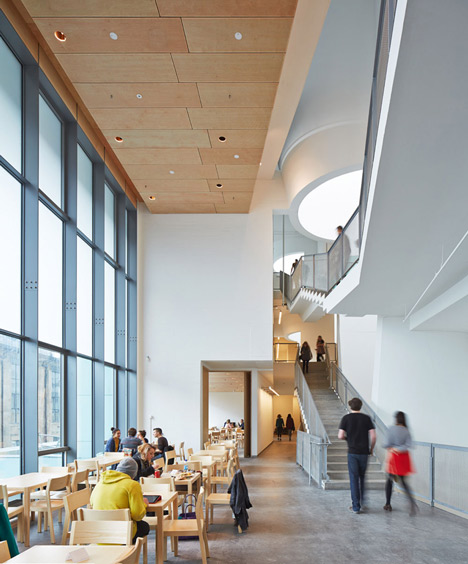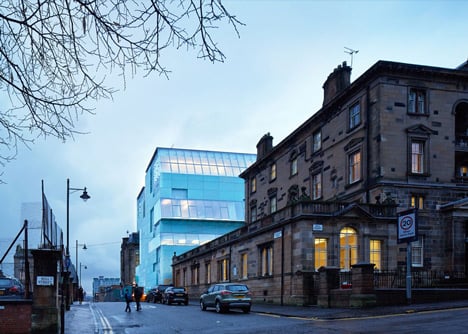Reacting to the critics would have "ruined" Glasgow School of Art building says Steven Holl
Steven Holl responds to the critics that blasted his controversial extension to Charles Rennie Mackintosh's Glasgow School of Art, saying that adhering to their comments would have "ruined the design", in this series of movies about the building.
The Reid Building provides modern studios for the art and design university, whose historic main building was completed by Scottish architect Charles Rennie Mackintosh a century before, although it was tragically damaged by fire earlier this year.
Steven Holl's design came under fire from critics during the design stages, with architectural historian William JR Curtis describing the proposal as having a "dumb lack of articulation in construction and material".
"There were many controversial articles and I thought if I tried to adhere to any of those critics I would ruin this design," explains Holl, who was recently awarded the Praemium Imperiale arts prize.
"In that way it does connect to Mackintosh; his building was a shock in 1904 and it could only be done then, and this building could only be done now," he says.

The first of the two movies tours the spaces of the building, while the second is an interview with Holl and senior partner Chris McVoy.
The pair explain how their design centres around the concept of "driven voids" – three cylindrical shafts of light that stretch down from the roof to the basement to bring light into all of the design studios.

"I studied all the ways that light comes into the Mackintosh building and discovered many different interesting things and one in particular is in the library where these three-storey element in glass – we called them driven voids of light – and we transferred that into this idea of concrete driven voids which would hold the building up, bring light in and circulate the air," says Holl.
McVoy continues: "They bring that sense of the sky and the changing light of the day all the way down through the building. They feel almost weightless because they're containing that most ephemeral material, which is light."

The main circulation route moves across, through and around these light wells. A refectory sits halfway along the route to provide a social space for students, and internal windows create views between different studios.
"They're carved at certain moments to allow views through the whole building, from the north to the Mackintosh, and they're framing views of people moving up and down, so really when you're in the studio you feel the activity and movement of the whole school," says McVoy.

He also explains how the cantilevered corner of the building, which extends out over the 1930s Assembly Building that houses the student union, was designed so that "the three schools are brought together on this one corner".

Holl says he hopes the project creates a connection with Mackintosh's building. "Mackintosh was someone who broke ground, made a language, turned his back on history and forged forward for a kind of new architecture."
"More than anything I thought I could show that I sincerely connected this to Mackintosh, even though this building is very abstract," he says.
Movies were produced by Spirit of Space. Photography is by Paul Riddle.